Languages
Visiofactory
- Array
- Array
Visiofactory Deutschland
- Array
Visiofactory Schweiz
- Array
- Array
- Array

In April, 15% off Ray-Ban Authentic lenses!
Languages
Visiofactory


Difficult to see clearly between the complex language of the "optical" world and the prescription left by your ophthalmologist. Do not panic, here we take the basics and we tell you everything.
The light of an object that propagates in a "healthy" eye enters into it and focuses at one point to recreate the image at the level of the retina.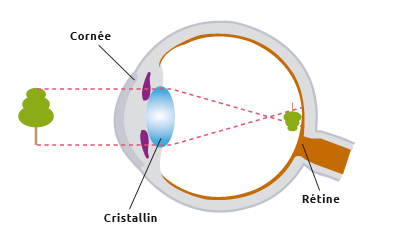
70% 70% of French people have visual problems.
Myopia, farsightedness, astigmatism or presbitia ... What are "suffering" our eyes?.

WHAT IS IT ?
A bad long distance vision
The image of a distant object is formed in front of the retina and the vision in the distance is blurred.
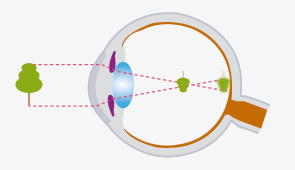
THE SOLUTION
Concave spherical lenses (thin in the center, thick on the edges) with a negative power (-)

WHAT IS IT ?
A bad near vision
The image of a distant object is formed behind the retina and near vision is blurred.
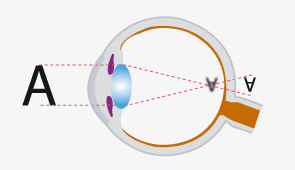
THE SOLUTION
Spherical convex lenses (thick in the center, thin on the edges) with a positive power (+)

WHAT IS IT ?
An imprecise vision
The curvature defects of the cornea produce two superimposed images for the same object and induce blurred vision from near and far. Astigmatism is associated with myopia and / or hyperopia.
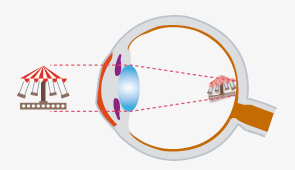
THE SOLUTION
Toric lenses whose thickness varies according to the orientation to reorient the light rays towards the retina and to compensate for the curvature of the cornea.

WHAT IS IT ?
A bad near vision
Natural phenomenon of the lens which loses its flexibility. Close-up vision becomes difficult, even for someone who sees perfectly well from a distance.
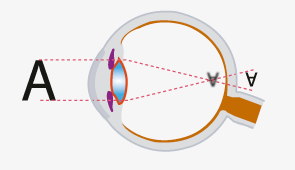
THE SOLUTION
Spherical glasses with positive or negative power OR progressive lenses with a power progression from top to bottom.
Now that the different cases have been identified, we can move on and decrypt together the order in all its possible forms of writing. But first, a little vocabulary!
The sphere is the power add to correct myopia, hyperopia or astigmatism.
This is the prescribed value for progressive presbyopic lenses. Always identical for both eyes, it refers to the power to add to vision from a distance to get near vision.
The cylinder is a parameter allowing the treatment of astigmatism. The value is followed by an axis expressed in degree (0 ° to 180 °) positive or negative..
Expressed in degrees, it indicates the direction of the astigmatism to be corrected.

My prescription contains a unique value next to "right eye" (OD) or "left eye" (OG):

This is a simple myopia (if this figure - which corresponds to the sphere - is negative) or simple hyperopia if the number has a positive value.
If I read several values next to "right eye" or "left eye":

I "suffer" from myopia or hyperopia with astigmatism. The value in brackets is the cylinder and ALWAYS matches the axis in degrees. The writing may be different depending on the ophthalmologist but the correction is exactly THE SAME.
If the order contains the mention "Addition" usually written "ADD" in addition to the values quoted above:

Your ophthalmologist has prescribed glasses called "progressive" to correct your presbyopia.
Ophthalmologists have become accustomed to writing the value of the cylinder in negative (here -1.00) whereas the manufacturers or opticians resonate with a positive cylinder and thus transpose the formula:

The same correction can be written in two different ways.
How to translate your prescription:
If you still have a doubt, just check the following box in our optical module

and we will complete the file for you!
newsletter
Stay informed and get a 5€ discount
OUR SERVICES
HELP & INFOS
When you visit any website, it may store or retrieve information on your browser, mostly in the form of 'cookies'. This information, which might be about you, your preferences, or your internet device (computer, tablet or mobile), is mostly used to make the site work as you expect it to.
Necessary cookies help make a website usable by enabling basic functions like page navigation and access to secure areas of the website. The website cannot function properly without these cookies.
| Name | Provider | What it does | Expiry | Allow (Check all) |
|---|---|---|---|---|
Preference cookies enable a website to remember information that changes the way the website behaves or looks, like your preferred language or the region that you are in.
| Name | Provider | What it does | Expiry | Allow (Check all) |
|---|---|---|---|---|
Statistic cookies help website owners to understand how visitors interact with websites by collecting and reporting information anonymously.
| Name | Provider | What it does | Expiry | Allow (Check all) |
|---|---|---|---|---|
Marketing cookies are used to track visitors across websites. The intention is to display ads that are relevant and engaging for the individual user and thereby more valuable for publishers and third party advertisers.
| Name | Provider | What it does | Expiry | Allow (Check all) |
|---|---|---|---|---|